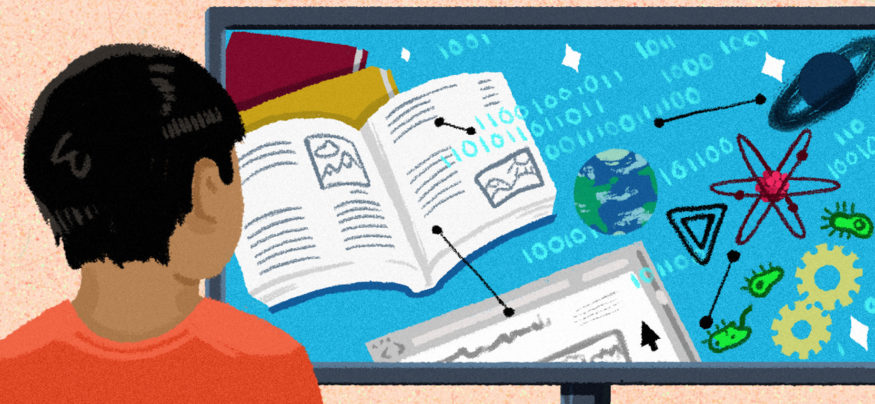As the focus on STEM — and in particular, coding and computer science — in education has grown, more schools are looking for STEM lesson plans that will help them provide great education to their students.
A particular struggle in many schools is that business teachers are being asked to take on computer science and coding instruction to meet student and parent demand for classes in these lucrative fields. With varying levels of comfort and experience with coding, it’s easy to see why these teachers are looking for well-designed curricula that will help them take on these new courses.
External STEM Lesson Plans
School districts have long relied on outside professionals to create textbooks and learning materials for students, both because it’s more economical and it allows teachers to focus their time on their students, not on developing course materials.
Because few computer science professionals choose to teach in K-12 schools, it makes sense to look for computer science curriculum that’s created by technology professionals. An online digital curriculum also allows students to use the tools they’re familiar with to access their lessons in computer science, other STEM fields and all other courses.
The Key to a Good Digital STEM Curriculum
Diane Carver, director of career and college readiness at the Bethel School District, says her district was looking for a fully online experience for their students. They needed students in the cities they serve to be able to complete the course on their own and learn to navigate an online class. Also vital was a course that was fully guided for the teacher and that provided further training on their own time.
Because of the robust professional development and the online nature of the course offerings, Carver’s district chose STEM Fuse’s GAME:IT curriculum for their ninth-grade digital communication tools course. After getting started, says Carver, the teachers liked it because “it was step-by-step and guided.” Students enjoyed the course as well. “The career aspect helps get some less interested students involved” in the STEM lesson plans, she says.
STEM Fuse, founded by Carter Tatge in 2009, has created an engaging set of tools to help schools in meeting their educational goals in computer science, business, math and life sciences. In addition to ensuring that they include hands-on projects that are engaging, interactive and embedded into the curriculum rather than just provided on the side, Tatge says STEM Fuse has a “large group of teachers who pilot new courses” before they’re offered to schools. This process allows the developers to make changes to the lessons and the curriculum, as well as to tailor professional development for the teachers.
Make Your STEM Curriculum Great
Carver offered further advice about what a school system needs to look for — and be prepared to do — when it chooses a STEM curriculum.
First, she says, you should be prepared to add in resources to meet the specific needs of your students and your school. Therefore, you need a curriculum that’s flexible and allows the addition of outside content.
Second, look for a company that will keep an open line of communication. Carver has been able to submit feedback from teachers that resulted in updates to the software.
Finally, ensure that your curriculum options offer an easy process for updates. STEM Fuse pushes out updates whenever they’re live, so students and teachers always have access to the most recent version.
Samsung will soon be offering STEM Fuse courses as part of a complete STEM curriculum with lesson plans and professional development. Tatge, for one, is excited about the partnership because STEM Fuse answers the question often asked after teachers receive new computing hardware: “Now what do we do?”
How does your school district develop or obtain quality digital curriculum to teach STEM? Leave your advice in the comments below.







